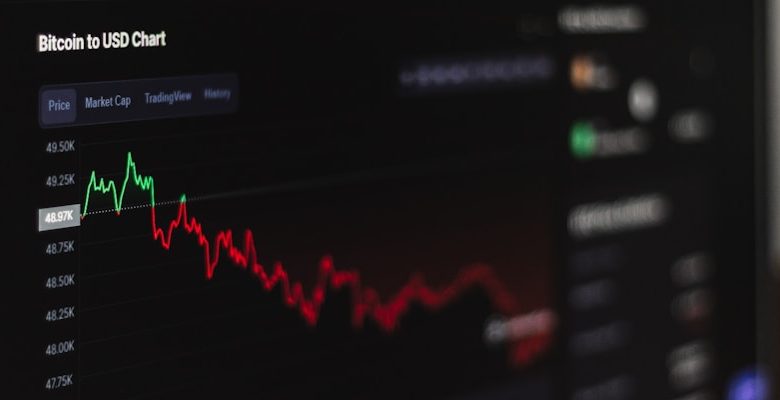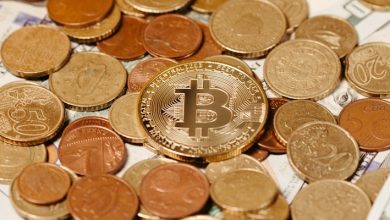The Role of Whales in the Cryptocurrency Market

- The Evolution of Whales in Cryptocurrency Trading
- Analyzing the Impact of Whale Activity on Cryptocurrency Prices
- How Whales Influence Market Sentiment in the Cryptocurrency Space
- The Strategies Employed by Whales to Manipulate Cryptocurrency Markets
- The Ethical Dilemmas Surrounding Whales’ Actions in Cryptocurrency Trading
- The Future of Whale Behavior and Its Effects on the Cryptocurrency Market
The Evolution of Whales in Cryptocurrency Trading
Whales have played a significant role in the cryptocurrency market since its inception. These large holders of digital assets have the power to influence prices through their trading activities. The evolution of whales in cryptocurrency trading has been a topic of interest for many analysts and investors.
One of the key characteristics of whales is their ability to move the market with large buy or sell orders. These actions can create volatility and impact the overall sentiment of other traders. As the cryptocurrency market has grown, so too have the strategies employed by whales to maximize their profits.
Whales have been known to engage in practices such as price manipulation, insider trading, and pump-and-dump schemes. These activities have led to increased scrutiny from regulators and exchanges, who are working to create a more transparent and fair trading environment.
Despite the negative connotations associated with whales, they also play a crucial role in providing liquidity to the market. Their ability to execute large trades can help stabilize prices and facilitate smoother trading for other participants. As the cryptocurrency market continues to mature, the behavior of whales will likely adapt to meet the changing landscape.
Analyzing the Impact of Whale Activity on Cryptocurrency Prices
When analyzing the impact of whale activity on cryptocurrency prices, it is essential to consider the significant influence these large holders have on the market. Whales, which are investors with substantial cryptocurrency holdings, have the power to manipulate prices through their buying and selling actions. This can lead to significant price fluctuations that can affect the overall market sentiment and investor behavior.
Whales often engage in tactics such as “whale watching,” where they monitor the market closely and make strategic trades to maximize their profits. By strategically buying or selling large amounts of cryptocurrency, whales can create artificial demand or supply, leading to price movements that may not reflect the true market value of a particular asset.
Additionally, whales can also use their significant holdings to influence other market participants. For example, they may collaborate with other whales to coordinate their trading activities, leading to coordinated price movements that can impact smaller investors. This can create a sense of FOMO (fear of missing out) or FUD (fear, uncertainty, and doubt) among retail investors, further exacerbating price volatility.
How Whales Influence Market Sentiment in the Cryptocurrency Space
Whales, large holders of cryptocurrency, have a significant impact on market sentiment in the cryptocurrency space. These powerful players possess a substantial amount of digital assets, allowing them to manipulate prices and influence the behavior of smaller investors. Their actions can create waves of fear, uncertainty, and doubt, causing market volatility and affecting the overall sentiment of the market.
Whales can strategically buy or sell large quantities of cryptocurrency to create artificial demand or supply, leading to price fluctuations that can trigger panic selling or buying among smaller investors. This manipulation can result in price swings that affect the market sentiment, as investors react to the perceived trends set by these influential players.
Moreover, whales often engage in “pump and dump” schemes, where they inflate the price of a particular cryptocurrency through coordinated buying, only to sell off their holdings at a profit once the price has peaked. This practice can distort market sentiment by creating a false sense of optimism before the inevitable market correction occurs.
In addition, whales can also use their substantial holdings to control voting power in decentralized governance systems, allowing them to influence important decisions that impact the future of a particular cryptocurrency. This level of control can further sway market sentiment as investors react to the potential implications of these decisions on the value of their investments.
Overall, the actions of whales in the cryptocurrency market play a crucial role in shaping market sentiment. Their ability to manipulate prices, engage in pump and dump schemes, and control governance decisions can create an atmosphere of uncertainty and speculation among investors. As such, it is essential for market participants to be aware of the influence of whales and take their actions into consideration when making investment decisions.
The Strategies Employed by Whales to Manipulate Cryptocurrency Markets
One of the key strategies employed by large holders in the cryptocurrency market, known as whales, is known as “pump and dump.” This scheme involves artificially inflating the price of a particular asset through coordinated buying, creating a buying frenzy among smaller investors. Once the price reaches a certain level, the whales then sell off their holdings at a profit, causing the price to plummet and leaving smaller investors with losses.
Another common tactic used by whales is known as “spoofing.” This involves placing large buy or sell orders to create the illusion of market demand or supply, with no intention of actually executing the trade. This can manipulate prices and trick other traders into making decisions based on false information.
Whales also engage in “wash trading,” where they simultaneously buy and sell the same asset to create the appearance of higher trading volume. This can attract other traders looking for liquidity, leading to increased volatility and potentially benefiting the whales.
Additionally, whales may use their large holdings to influence market sentiment through social media and other platforms. By spreading false information or rumors, they can manipulate the market and profit from the resulting price movements.
Overall, the strategies employed by whales in the cryptocurrency market are diverse and complex, designed to maximize their profits at the expense of smaller investors. Understanding these tactics is crucial for navigating the volatile world of cryptocurrency trading.
The Ethical Dilemmas Surrounding Whales’ Actions in Cryptocurrency Trading
One of the ethical dilemmas surrounding the role of whales in the cryptocurrency market is their ability to manipulate prices through large trades. These actions can have a significant impact on smaller investors and can lead to market instability. Whales often take advantage of their large holdings to create artificial price movements, which can result in substantial losses for other market participants.
Furthermore, the lack of regulation in the cryptocurrency market makes it difficult to hold whales accountable for their actions. This lack of oversight can lead to unfair practices and market manipulation, which can harm the overall integrity of the market. As a result, there is a growing concern about the influence that whales have on the cryptocurrency market and the need for greater transparency and regulation to address these issues.
Another ethical consideration is the environmental impact of whales’ actions in cryptocurrency trading. The energy-intensive process of mining cryptocurrencies has raised concerns about its contribution to climate change. Whales, who often control a significant portion of the market, can have a substantial impact on the energy consumption of the network through their trading activities.
The Future of Whale Behavior and Its Effects on the Cryptocurrency Market
As we look ahead to the future of whale behavior in the cryptocurrency market, it is essential to consider the potential effects on pricing and market dynamics. Whales, or large holders of cryptocurrency, have the power to influence market trends through their significant holdings and trading activities. Their actions can lead to price manipulation, volatility, and market crashes, impacting both individual investors and the market as a whole.
Understanding and predicting whale behavior is crucial for investors and traders to make informed decisions and mitigate risks. By analyzing patterns in whale trading, such as large buy or sell orders, sudden movements of funds, or changes in wallet activity, market participants can gain insights into potential market movements and adjust their strategies accordingly.
Furthermore, the rise of decentralized finance (DeFi) platforms has introduced new opportunities and challenges in whale behavior. Whales can now participate in various DeFi protocols, such as yield farming, liquidity provision, and governance voting, to maximize their returns and influence project outcomes. These activities can impact token prices, liquidity pools, and overall market sentiment, creating both opportunities and risks for investors.



